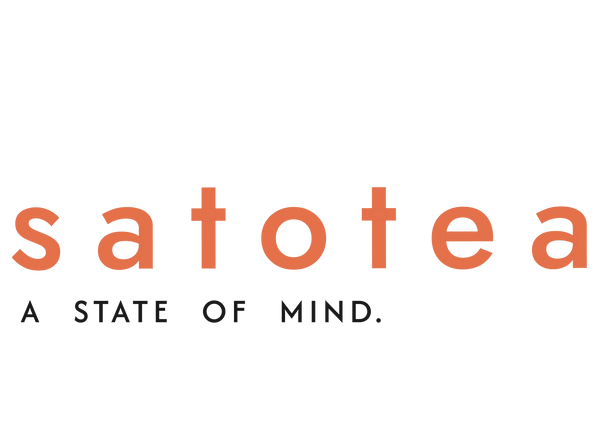從逃避到虛擬:人類失去成長的年代
E Nan當代的我們,活在一個矛盾的時代。一方面,內心深處有著一種渴望——渴望連結、渴望靜定與意義;另一方面,外在世界卻在快速地朝向斷裂、過度刺激與表面化加速推進。這樣的張力不僅僅是文化現象,更是深刻的個人經驗。它影響著我們的思想、情感與行動,也形塑我們成為怎樣的人。
在 satotea,我們常回到一個核心觀點:成長從來不是理所當然的,它需要被細心培育。而當這個時代將「舒適」取代了「挑戰」、將「模擬」取代了「真實」、將「速度」取代了「深度」,我們也正在失去那些曾經滋養人類成長的根本條件。
逃避主義:為什麼我們越來越無法面對現實?

當人們找不到前進的方向、當現實變得難以承受時,他們會尋找替代品。這些替代品,表面看起來無害,甚至有時還充滿趣味,但當它們變成習慣時,便成了一種模式:逃避主義。
逃避主義不總是以戲劇性的方式出現。更多時候,它是日常的累積:重度消費、麻痺的日常、無止盡地滑社群媒體、沉浸在遊戲或影集中的長時間放空。這些行為提供了短暫的安慰,卻也悄悄帶走了我們對當下的真正臨在。
在台灣,深夜的街頭常常可以看見一排排夾娃娃機,成年人反覆投幣,只為抓到一個填充玩具。乍看是種童趣,實則透露出一種無聲的焦慮——對控制感的渴望、對短暫慰藉的依賴。像這樣的現代儀式,早已不是為了那個娃娃,而是為了那一刻的轉移與麻痺。


逃避主義也不只是消費行為,它更滲入我們的溝通、關係與情感。人工情人、AI對話機器人、模擬情緒回應……這些設計看似為了減少人與人之間的摩擦,實則在剝奪我們建立真實連結的可能。
超現實:當模擬取代了真實
若要更深入理解這個現象,我們可以參考法國哲學家 Jean Baudrillard 所提出的「超現實」(hyperreality)概念。在他的著作《擬像與擬仿》(Simulacra and Simulation)中,他描述了四個階段:
-
反映現實:符號映照某種基本現實(如鏡中的影像)
-
扭曲現實:符號掩蓋並扭曲現實(如簡化的地圖模型)
-
偽裝現實:符號假裝代表現實,卻與現實毫無關聯(如 AI 模擬演講)
-
純模擬物:符號純粹是一種擬像,完全與現實脫鉤(如虛擬網紅、數位身分)
在超現實的世界裡,我們不再與「真實」共處,而是透過一層又一層的媒介與它相遇。我們的經驗被過濾、被遊戲化、被演算法最佳化為「易於消化」的版本。甚至連回憶本身,也不再源自當下的體驗,而是來自那些經過精心包裝後的影像與社群貼文。
在這樣的文化中,阻力消失了。瑕疵、摩擦、不便,也一併被排除。我們得到了更順暢的體驗,卻也因此失去了深刻的變化與轉化可能。
當「成長」讓位於「舒適」:人類正在失去的東西
人類的成長從來都是透過阻力而來:
- 在生理上,肌肉需要負重與撕裂才能增生;
- 在心理上,韌性是在困境中被培養;
- 在創造力上,限制常常催生創新;
- 在經濟體系中,有回饋才有進步。
但在超現實中,這些過程被跳過了。人們從模擬的獎勵中獲得即時肯定:一則貼文、一個短影片、一次快速的點讚,就能獲得過往需經年累月才能獲得的關注與認可。學習與淬鍊被省略了,結果卻依然到來——只是它是空的。
過去,想要有影響力需要時間與修練;今天,只要一個 viral 的片段就能得到相同的效果。於是,「看起來有價值」變得比「真實的價值」更重要。
當這樣的邏輯普遍發生,整個文化就開始轉向膚淺。追求深度的人會感到格格不入;而那些仍然願意走慢路的人,也可能被忽略或誤解。
我們正在走向退化嗎?一個假設

如果這個趨勢持續下去呢?
我們提出一個簡單的假設:當超現實成為主流,人類的成長將會被阻礙,甚至終止。
因為——成長需要阻力,而阻力被移除;成長需要不適,而不適被麻痺;成長需要真實的碰撞與摩擦,但那些真實正在被一層層替代品掩蓋。
少了挑戰,就沒有轉化;少了轉化,就沒有成熟。最後,我們將成為文化上停滯、心理上脆弱、精神上空洞的族群。
這不是危言聳聽。現象已經在發生:憂鬱與焦慮的比例持續上升,注意力下降,空虛感蔓延,社會看似互聯,但人們彼此之間卻從未如此疏離。
我們的選擇:崩壞 vs. 覺醒
這樣的未來,可能有兩種走向:
A:崩壞
我們繼續向抽象化與模擬推進。人的能力逐漸退化,決策外包給演算法,人際關係虛擬化,死亡被延遲甚至被數位替代。文化逐漸內捲,思想失去多樣性,歷史被遺忘,意義變得無所依附。人的成長與痛苦的可能性,將一點一滴消失。
B:覺醒
另一種可能,是覺醒的回流。不是倒退,而是向內。歷史上,每一個主流文化浪潮,都曾被其對立面回應過:啟蒙運動遇上浪漫主義,工業化遇上手作回歸,全球化也遇上在地意識。這一次也不例外。
這場回流不會轟轟烈烈,它是緩慢、柔軟、踏實的。它發生在身體之中,在一口茶湯裡,在靜坐裡,在一場深度對話裡。它不是反對科技,而是重新選擇我們允許什麼進入生活。我們如何安排時間、如何對待呼吸、如何面對內在的空白。
在 satotea,我們已經看見這樣的微光:不是在遊行或政策裡,而是在茶席、在森林裡、在少數願意慢下來的人的生活中。真正的反抗,有時就是選擇靜靜地坐下來。

結語:重返當下的勇氣
這篇文章不是在否定現代科技,也不是要浪漫化過去,而是邀請我們重新思考:在這個超現實的時代,我們是否願意主動選擇什麼值得被珍惜與培養?
成長仍然是可能的。但它需要我們真實地活在當下,而不是依賴模擬的影像與快感。它需要我們敢於感受、敢於質疑、敢於不適,並從那些不適中慢慢生長。
有時,真正的「對抗」,不過就是靜默。不過就是煮一壺茶。不過就是,在所有人逃避時,你選擇,不轉身。
